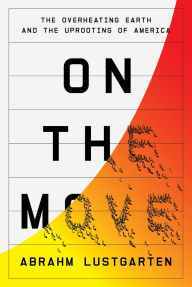Steve Bull's Blog, page 55
April 17, 2024
Nuclear Weapons Are the Biggest Single Danger for Humanity and All Forms of Life

Hiroshima, August 6, 1945 : Father Kleinsorge, a German missionary, heard pathetic voices of people asking for water. When he managed to reach the place from where the voice had come, he saw nearly 20 persons, all of them in similar condition – their faces were wholly burned, their eye sockets were hollow, the fluid from their melted eyes had run down their checks.
Temperature at the hypocentre of the explosion reaching the double of what it takes to melt iron, the face of a schoolgirl sitting almost a kilometre away from this hypocentre being burnt beyond recognition, skin sloughing off scalded bodies, badly injured starving people unable to swallow anything because of the stench of dead bodies – this was the devastation caused by a 12.5 Kiloton bomb in Hiroshima which killed and wounded as many people as a mass raid of 279 aircrafts, laden to capacity with bombs, striking at a city ten times as populous.
Nearly one hundred thousand people were killed within a few minutes in Hiroshima and Nagasaki after being hit by nuclear weapons in 1945, but if we count the longer-term deaths, those caused by internal bleeding, leukaemia, various other forms of cancer, then the death toll is likely to be as high as 3,50,000. In addition the next generation continued to pay for this cruelty in the form of children born with mental retardation, physical deformities and other serious health problems.
So cruel was the devastation that all of us must necessarily ask – we certainly do not want Hiroshima to happen to our friends, but do we want it to happen even to our worst enemies?
…click on the above link to read the rest of the article…
April 16, 2024
Financial Forecast 2025-2032: Please Don’t Be Naive
Let’s start by stipulating that I don’t “like” this forecast. I’m not “talking my book” (for example, promoting nuclear power because I own shares in a uranium mine) or issuing this forecast because I favor it. I simply see it as the most likely trajectory of the global financial system, based on history and the dynamics of human systems. “Liking” it or not liking it has nothing to do with it: the opinions of Titanic passengers who didn’t “like” that the ship was sinking didn’t affect the outcome.
You already know the global financial system is untenable. In a nutshell, the expansion of production and consumption has been funded by the expansion of credit–money borrowed from future resources and income. The rate of expanding debt far surpasses the anemic rates of expanding production, and this rapidly expanding mountain of debt is perched precariously on the phantom collateral generated by The Everything Bubble, the astounding expansion of asset prices as those with the lowest cost access to credit have bid up every asset class, from real estate to gold to bitcoin to stocks to fine art.
All these assets are phantom collateral because they were bid up on the wings of cheap, abundant credit. History is rather decisive: all credit-asset bubbles pop, and the price of the assets round-trips back to pre-bubble valuations. As the bubble pops, credit shifts from being abundant and near-zero in cost to being scarce and dear.
…click on the above link to read the rest of the article…Thermal Storage Hopium
 Photo by Photoholgic on Unsplash
Photo by Photoholgic on UnsplashAfter realizing that there is not enough mining capacity to “produce” the necessary amount of metals to build enough batteries (not only lithium, but copper, nickel and much more), a mad scramble to find an alternative electricity storage solution began. Last time I revisited the problem, the hype was all about using aluminum waste to convert its embedded chemical energy into hydrogen and heat. Now its time for thermal batteries to receive their fare share of criticism.
Thermal storage is touted as a “clean and sustainable alternative” to Lithium-Ion Batteries. According to media reports: “The thermal batteries industry is in the nascent stage of development, but it is gaining increasing attention, as governments and companies worldwide look for alternative green solutions. These batteries work by heating a substance to store thermal energy, which can be converted into heat or electricity. Energy from renewable sources, such as solar and wind farms, can be stored to use when energy is not being produced on-site, to ensure a stable flow of electricity to the grid.”
Well, where to start? It is one thing to store excess electricity generated by wind and solar as heat, it is quite another to convert that heat back into electricity… A “problem” grossly overlooked by the technutopists pushing this idea. You see, the efficiency of such an energy storage system is still ruled by physics, and thinking that this is just another “problem” to be solved, well, is magical thinking at best. As discovered by Nicolas Léonard Sadi Carnot in 1824, not even an ideal, frictionless engine can convert 100% of its input heat into work: that nasty second law of thermodynamics puts a fundamental limit on the thermal efficiency of all heat engines…
…click on the above link to read the rest of the article…
On the Move
Abrahm Lustgarten zooms in on how global warming will affect the United States
 As the risk of wildfires grows in the American West (the 2020 Blue Ridge Fire in California, shown), some residents may look for other places to live.
As the risk of wildfires grows in the American West (the 2020 Blue Ridge Fire in California, shown), some residents may look for other places to live.DAVID MCNEW/GETTY IMAGES
Share this:EmailFacebookTwitterPinterest
On the Move
Abrahm Lustgarten
Farrar, Straus and Giroux, $30
Ellen Herdell’s nerves were nearing a breaking point. The fortysomething, lifelong Californian had noticed her home was increasingly threatened by wildfires. After relatives lost their house to a blaze and the constant threat traumatized her 9-year-old daughter, Herdell found herself up at 3 a.m. one night in 2020 searching Zillow for homes in Vermont.
She’s not alone. Across the United States, people facing extreme fires, storms, floods and heat are looking for the escape hatch. In On the Move, Abrahm Lustgarten examines who these people are, where they live, where climate change may cause them to move and how this reshuffling will impact the country (SN: 5/12/20).
At about 300 pages, the book is a relatively quick read, but Lustgarten’s reporting is deep. Leaning on interviews with such high-profile sources as former U.S. Secretary of State John Kerry and on published research, Lustgarten explains the scientific and political sides of climate migration. Anecdotes from people across the socioeconomic spectrum reveal the mind-sets of people at the front lines of the climate crisis…
…click on the above link to read the rest of the article…
“Live Fast, Die Young”: USDA Shifts Plant Hardiness Zones
Draft script:
Here’s the final sentence of the first paragraph in an article released by yahoo.com on 14 February 2024: “The USDA just updated its plant hardiness zone map for the first time since 2012, and there have been some major changes.” In other words, the United States Department of Agriculture has altered their map of plant hardiness zones for the first time in more than a decade. Plant hardiness zones have been described since 1927, initially with eight zones, and now with 13 zones. Although the article at yahoo.com focuses on gardening, the implications for all ecosystems on Earth are clear.
This new map of plant hardiness zones was released in November 2023. According to the new map, about half of the United States has shifted to a new hardiness zone. The article at yahoo.com expresses the issue in this manner: “That’s really big news if you consider 80 million Americans use this map to decide on what and when to grow! Simply put, the types of plants that are able to grow successfully has changed for 50 percent of the country, according to data collected by over 13,000 weather stations across the U.S.” Obviously, this finding has implications well beyond gardening. If the physical characteristics of the Northern Hemisphere have changed, then the ability of organisms to keep up with those characteristics is an important consideration. As I have repeatedly pointed out, the rate of environmental change is critically important to the continued existence of species and populations.
A related article was published at Phys.org on 16 February 2024: ‘Live fast, die young’: Agriculture is transforming entire ecosystems. Here’s the opening paragraph: “A research team has investigated the effects of agricultural grassland use on communities of organisms…
…click on the link above to read the rest of the article…
What About Prices?
Chapter 8 from my forthcoming book Rebuilding Economics from the Top Down
Inflation, having been quiescent for decades, became a serious issue once more with the bout of inflation that occurred after the peak of the government reaction to the Covid crisis. Though it did not reach the 12-15% levels of the mid-1970s to mid-1980s, and it has fallen sharply from its peak of 8.9% p.a. in June of 2022 to 3.2% in October 2023, it was still a serious break from the low inflation period from the mid-1980s until the beginning of the 2020s—see the top chart in Figure 19.
This is Chapter 8 from my forthcoming book Rebuilding Economics from the Top Down, which will be published by the Budapest Centre for Long-Term Sustainability and the Pallas Athéné Domus Meriti Foundation. I am serialising the book chapters here. A watermarked PDF of the manuscript is available to supporters.
The original Neoclassical (and Austrian) explanation for inflation is that it is caused by “too much money chasing too few goods”, with government money creation being the culprit, and with “long and variable lags” between government deficits and actual inflation:
The lag between the creation of a government deficit and its effects on the behavior of consumers and producers could conceivably be so long and variable that the stimulating effects of the deficit were often operative only after other factors had already brought about a recovery rather than when the initial decline was in progress. Despite intuitive feelings to the contrary, I do not believe we know enough to rule out completely this possibility. If it were realized, the proposed framework could intensify rather than mitigate cyclical fluctuations; that is, long and variable lags could convert the fluctuations in the government contribution to the income stream into the equivalent of an additional random disturbance. (Friedman 1948, p. 254. Emphasis added).
…click on the above link to read the rest of the article…
AI, Cryptocurrency Will Double Data Center Energy Consumption by 2026
According to the IEA, electricity consumption from data centres, artificial intelligence (AI) and the cryptocurrency sector could double by 2026. Factor in the global push to EVs.

Please consider the International Energy Agency IEA Electricity Analysis Report 2024-2026.
IEA Notable Points
Global electricity demand rose moderately in 2023 but is set to grow faster through 2026Global electricity demand is expected to rise at a faster rate over the next three years, growing by an average of 3.4% annually through 2026.Electricity consumption from data centres, artificial intelligence (AI) and the cryptocurrency sector could double by 2026.About 85% of additional electricity demand through 2026 is set to come from outside advanced economiesChina provides the largest share of global electricity demand growth in terms of volume, but India posts the fastest growth rate through 2026 among major economies.EU electricity consumption is not expected to return to 2021 levels until 2026 at the earliest. Electricity prices for energy-intensive industries in the European Union in 2023 were almost double those in the United States and China.Despite energy prices falling from their previous record highs, EU electricity demand further declined in 2023. Lower industrial electricity demand was the most important factor, as in the previous year.Renewables are set to provide more than one-third of total electricity generation globally by early 2025, overtaking coal. The share of renewables in electricity generation is forecast to rise from 30% in 2023 to 37% in 2026, with the growth largely supported by the expansion of ever cheaper solar PV.By 2025, global nuclear generation is forecast to exceed its previous record set in 2021.Global CO2 emissions from electricity generation are expected to fall by more than 2% in 2024 after increasing by 1% in 2023.…click. on the above link to read the rest of the article…
Forget the Black Swans; the Vultures already Circling us Are Bad Enough to Kill us
There is certainly more coming to eat away at your finances as infamous bankster Jamie Dimon laid out quite broadly and plainly this week.
 Photo by Abhishek Singh on Unsplash
Photo by Abhishek Singh on UnsplashJamie Dimon never saw a dying bank he didn’t want to eat. Yet, while I think that Dimon’s name should be pronounced less like the clear, crown jewel of choice and more like the horned fiends of Hades, he does often speak of things likely to bring down the banking world or the economy with more candor than any other bankers, including particularly his partners in crime at the Fed. And you can be sure he has his scavenger eye on those things.
Perhaps it is just because he has unparalleled confidence that he is untouchable like a serial killer who talks to police on the street about how sorry he feels that they have had no luck at all finding the serial killer. He’s just that confident his next big take from hauling in a failing bank at fire-sale prices is so certain, he needn’t worry that warning everyone of the coming failures will get in the way of his business. Thus, he can play the saint for warning us all, knowing the greedy will ignore his warnings anyway, and still wait in the wings for that Friday evening call from Fed Chair Jerome Powell that says, “We have another bank for you. Can we meet tomorrow morning to discuss terms and complete a weekend sale?”
Fitting right in with my theme for this weekend’s Deeper Dive for paying subscribers to be titled “The Apoceclypse,” The CEO of JPMorgan Chase warned the world this week that it faces “Risks that eclipse anything since World War II.” I, of course, couldn’t agree more, so I want to spend this article distilling the Dimon’s annual report down to the most essential risks:
…click on the above link to read the rest of the article…
What Optimism and Pessimism Are in the 21st Century, a Reflection on “Are We Doomed?,” And Two Narratives of the Human Journey
Quick Links and Fresh Thinking
‘Things I’m ashamed to admit’: TikTok trend driving new level of oversharing (The Guardian)How the Ray-Ban Wayfarer became the accessory of choice for the men-children of the world (El Pais)Why We’re All Still Waiting for the EV Future (Inc)US will push China to change a policy threatening American jobs, Treasury Secretary Yellen says (AP News)Assessing the health burden from air pollution (Science)Hi! How’s everyone? Thank you for joining me, and welcome new readers.
Today we’re going to discuss… “are we doomed?!” That’s the kind of dismal, reductive framing that’s emerged around an issue that deserves better—decline, degeneration, the rise of a number of troubling trends, all at once.
Let’s reflect on this sort of question together, beginning with…
Exhibit One In: “Are We Doomed?”
Did that make you shudder a little bit? If you don’t quite get the point, let me spell it out.
Right about now, climate scientists are a little horrified, bewildered, and perplexed. We’re in “uncharted territory,” and warming’s outpacing models, sometimes by a very long way. It was recently 40 degrees Centigrade in…Antarctica.
Meanwhile, the average person is less and less likely to believe that this is real, aka, there’s such a thing as human-made climate change. In the last few years alone, the number’s grown significantly, and over a quarter now believe that climate change is due to “natural causes, up from just 14%. That’s not an absolutely high number in itself, but the trend is striking, disturbing, and sort of mega-troubling: increasing numbers of people are climate deniers.
…click on the above link to read the rest of the article…
Did UAE’s Cloud-Seeding Operation Flood Dubai?
How it started with UAE’s cloud seeding operations:
How it’s going:
Not so well…
All inbound flights to Dubai International Airport were diverted on Tuesday evening.
“It’s certainly not just cloud seeding. The convective clouds that are associated with the sorts of stormy weather we’re facing form entirely naturally,” UAE news website What’s On said.
Perhaps the government playing God by fiddling with Mother Nature has unintended consequences…





